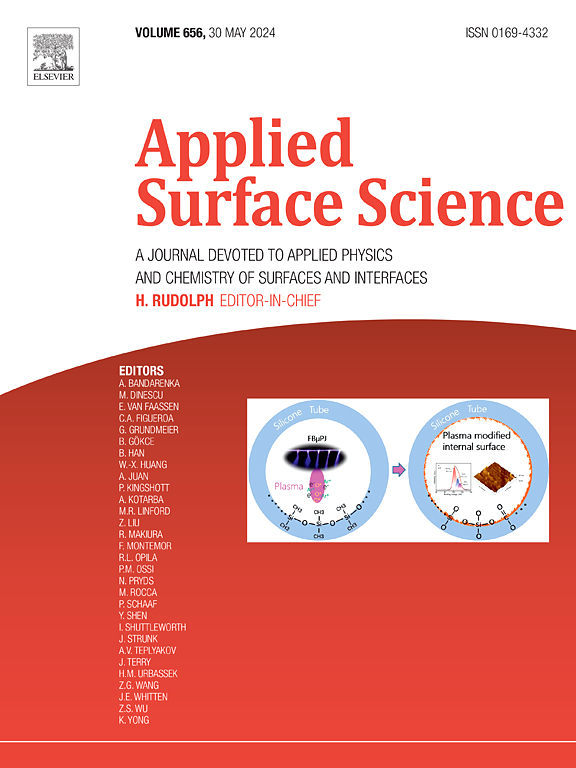Heterostructured Zr-Ni4Mo/Mo2N nanorod with lattice expansion induced by Zr doping for efficient and durable hydrogen evolution reaction
IF 6.3
2区 材料科学
Q2 CHEMISTRY, PHYSICAL
引用次数: 0
Abstract
Non-precious metal electrocatalysts with high activity for hydrogen evolution reaction (HER) is important for decreasing the energy consumption of hydrogen production and the cost of water electrolysis devices. However, the existing highly active electrocatalysts generally suffer from oxidation and deactivation under harsh conditions of industrial water splitting. Herein, a heterostructured Zr-Ni4Mo/Mo2N nanorod material with lattice expansion induced by Zr doping is fabricated as an efficient and durable electrocatalyst for HER. The prepared Zr-Ni4Mo/Mo2N exhibits ultra-low overpotential of only 8 mV at 10 mA cm−2 in 1 M KOH. Particularly, the electrolytic cell equipped with Zr-Ni4Mo/Mo2N cathode consumes a low voltage of only 1.585 V under industrial alkaline water electrolysis conditions (3000 A m−2, 80 °C, 30 wt% KOH). The exceptionally high catalytic activity of Zr-Ni4Mo/Mo2N is proved by the low activation energy (Eaη=0) of 18.19 kJ mol−1. The lattice expansion and heterointerfaces generate abundant catalytic active sites. Moreover, Zr doping not only regulates electronic structure of Zr-Ni4Mo/Mo2N and reduces the kinetic energy barrier of HER, but also prevents the oxidation of active sites, which endows the Zr-Ni4Mo/Mo2N with excellent activity and strong durability. This work provides a new avenue for the design of non-precious metal electrocatalysts, which exhibit a promising prospect in industrial water splitting.

Zr掺杂诱导晶格膨胀的异质结构Zr- ni4mo /Mo2N纳米棒用于高效持久的析氢反应
具有高活性析氢反应的非贵金属电催化剂对于降低制氢能耗和水电解装置成本具有重要意义。然而,现有的高活性电催化剂在苛刻的工业水裂解条件下普遍存在氧化失活问题。本文制备了一种异质结构的Zr- ni4mo /Mo2N纳米棒材料,该材料具有由Zr掺杂引起的晶格膨胀,可作为高效耐用的HER电催化剂。制备的Zr-Ni4Mo/Mo2N在1 M KOH和10 mA cm−2条件下的过电位仅为8 mV。特别是,在工业碱性电解条件下(3000 a m−2,80 °C, 30 wt% KOH),配备Zr-Ni4Mo/Mo2N阴极的电解槽仅消耗1.585 V的低电压。Zr-Ni4Mo/Mo2N具有非常高的催化活性,其活化能(Eaη=0)为18.19 kJ mol−1。晶格膨胀和异质界面产生丰富的催化活性位点。此外,Zr的掺杂不仅可以调节Zr- ni4mo /Mo2N的电子结构,降低HER的动能势垒,还可以防止活性位点的氧化,使Zr- ni4mo /Mo2N具有优异的活性和较强的耐久性。本研究为非贵金属电催化剂的设计提供了新的途径,在工业水裂解中具有广阔的应用前景。
本文章由计算机程序翻译,如有差异,请以英文原文为准。
求助全文
约1分钟内获得全文
求助全文
来源期刊

Applied Surface Science
工程技术-材料科学:膜
CiteScore
12.50
自引率
7.50%
发文量
3393
审稿时长
67 days
期刊介绍:
Applied Surface Science covers topics contributing to a better understanding of surfaces, interfaces, nanostructures and their applications. The journal is concerned with scientific research on the atomic and molecular level of material properties determined with specific surface analytical techniques and/or computational methods, as well as the processing of such structures.
 求助内容:
求助内容: 应助结果提醒方式:
应助结果提醒方式:


